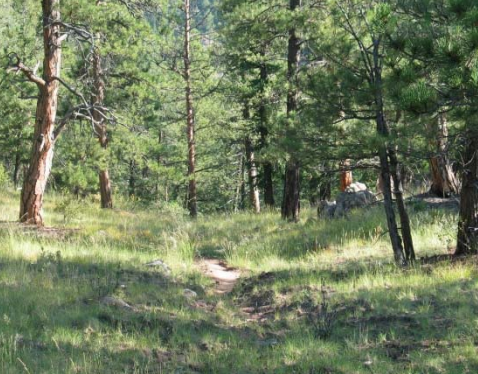Navigating the Unmarked Path

Navigating the Unmarked Path
Not all of the pathways in our life journey are clearly marked. Some can be more like a deer trail moving through the forest.
There is no way to know where the path is going or what to expect along the path!
This can be pretty unnerving. This is especially true when you have a picture in your mind about what should be here!
Unexpected change is like this path that moves towards the unknown.
A sudden loss, like a layoff, a divorce, the death of a spouse, a terrible illness in the family, or someone stealing your car while you shop at the mall can create a sense of dread, a feeling of anger, or a keen experience of being lost.
What is it about feeling lost that creates such apprehension? Let’s begin with you were expecting to see!
- What was in your head when you started on this pathway?
- Did you see paved roads, big green signs identifying the name of the next exit?
- Did you think you would see homes nestled in the forest with people waiting for you with hot apple pie?
Our minds play tricks on us, especially when we are emotionally confused.
So here are some steps to take to re-orient yourself so that you can determine the direction you really need to go: awareness, preparation, purpose, and action.
Be Aware
The realization that you might be lost occurs when the picture in front of you does not match the picture in your mind! All along you were focused on what was in your mind and not paying attention to the surroundings that were changing! Your well defined path has turned into this vague trail that seems to be more like an overgrown, dried-up creek bed! Many people have been feeling like this since COVID hit! Stores and restaurants that used to be a routine for socializing and purchasing are gone. New ones are starting to pop up, but they are unknown and don’t have the social structures of the former ones. The rhythms, the patterns, and the people are different. It takes time to reestablish the rhythms of our life. Awareness doesn’t make it better, but it does help to identify the feelings, and the need to pay attention in order to prepare for what lies ahead.
Pictures are a Resource for Preparation
Maybe it’s time to reconsider what you think you want, where you are trying to find it, and what you are actually doing to get where you want to go. The picture in your mind could be causing the challenge. It might be necessary to deconstruct that picture and reorient it. For instance, if it is a job you are seeking on this road, quit focusing on the title of the job, or the prestige of the job.
Consider these questions:
- What does this job mean to you?
- What values does it fulfill?
- What skills would it allow you to use?
- What kind of metaphor would you use in describing it?
- Who would benefit from your experiences?
- How would you find those people?
Using resources like Linked In and the internet, you can learn a great deal about various companies. You can explore their websites to see what they tell you about themselves. You can read articles about the leaders of those companies, you can find organizations that allow you to be with people who share your interests and your values. You can find people who work at those companies and interview them to find out what they like about their jobs. You can explore the professional association that is linked to the professional arena you are seeking.
If you were really in a forest on a hard to see trail, how would you prepare? What do you have within you? What do you know about yourself? You may not have a compass in your pocket, but you have a compass in the sky and on the trees. Moss is always on the north side of the tree. The sun still rises in the east and sets in the west. The clues are all around you. You might also prepare by thinking about what your original reason was for heading this way. Where did you think the path was taking you?
Clarify Your Purpose
What was your purpose? Can you accomplish that purpose in a different way by following this altered path? There are many movies and adventure stories about people who started going one place but ended up somewhere else to serve a greater purpose. Studying your purpose can provide additional areas of awareness and ways to prepare. Be open and pay attention!
Action: Take Advantage of Opportunities
Having a clear picture of your purpose can make you aware a variety of opportunities that you may have missed before. You may not know where this current path is headed but, if you use your tools and take advantage of what lies beyond the clutter of trees in front of you, you might actually walk out into an open field that shows you exactly where you are!



